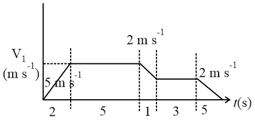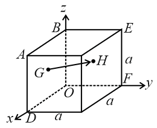MEDIUM
Earn 100
Starting from rest a particle is first accelerated for time with constant acceleration and then stops in time with constant retardation . let be the average velocity in this case and the total displacement. In the second case it is accelerating for the same time with constant acceleration and come to rest with constant retardation in time . If is the average velocity in this case and the total displacement, then
(a)
(b)
(c)
(d)
50% studentsanswered this correctly
Important Questions on Kinematics
EASY
HARD
EASY
A particle is moved in a semi-circular path of radius . Then
EASY
A fly is in rectilinear motion as described by the graph. The average speed of the fly is

MEDIUM
MEDIUM
MEDIUM
EASY
MEDIUM
EASY
MEDIUM
MEDIUM
In the cube of side shown in the figure, the vector from the central point of the face to the central point of the face will be:

MEDIUM
MEDIUM
EASY
EASY
EASY
MEDIUM
EASY
MEDIUM

